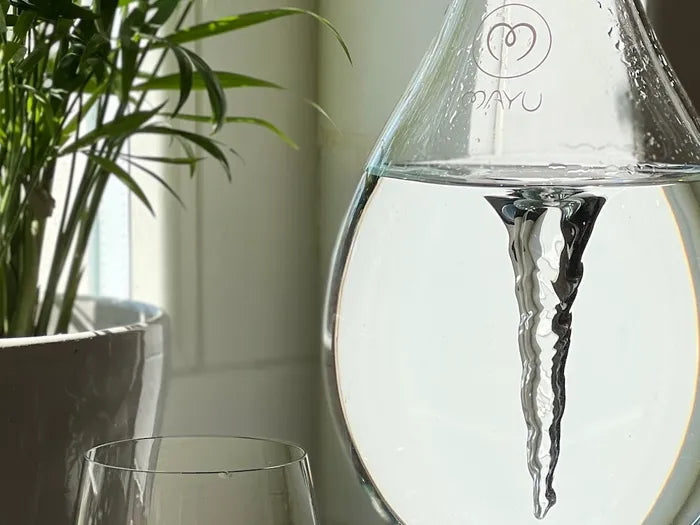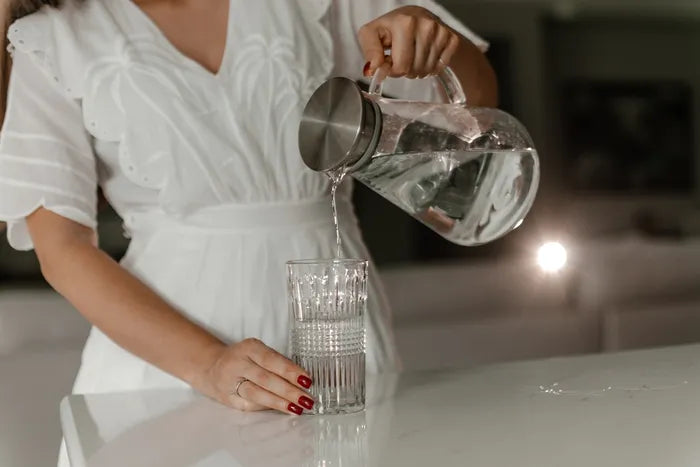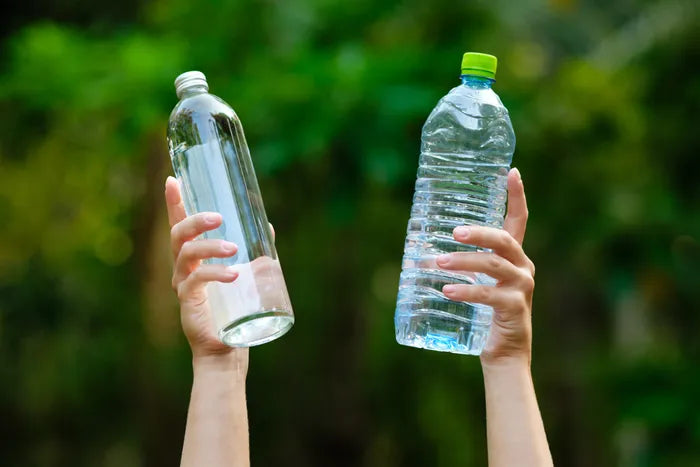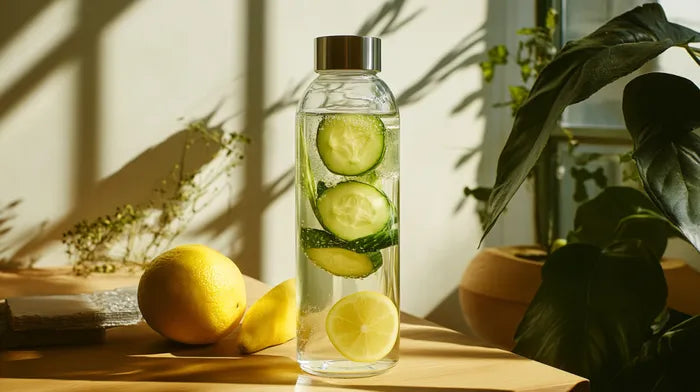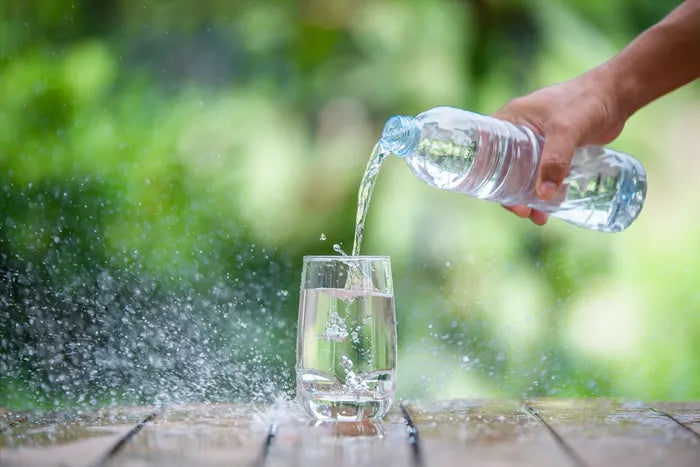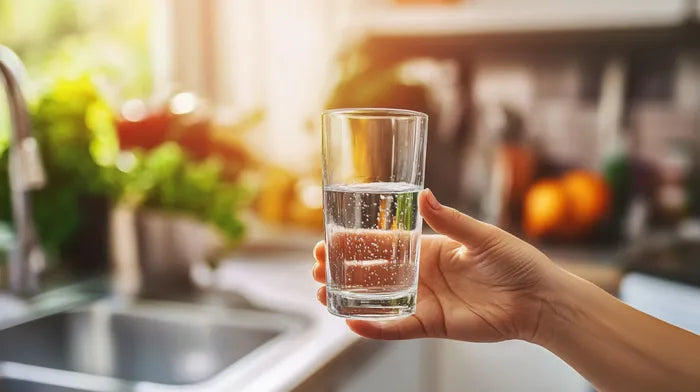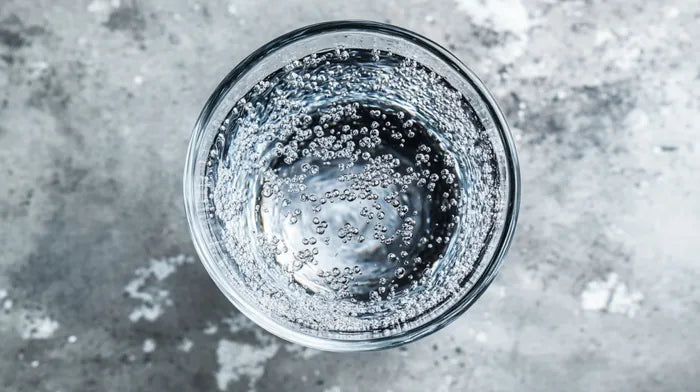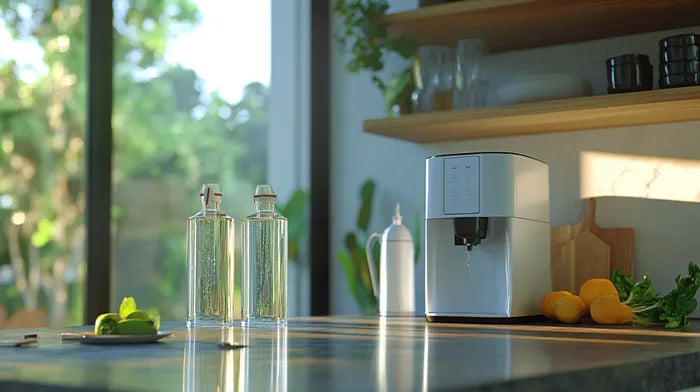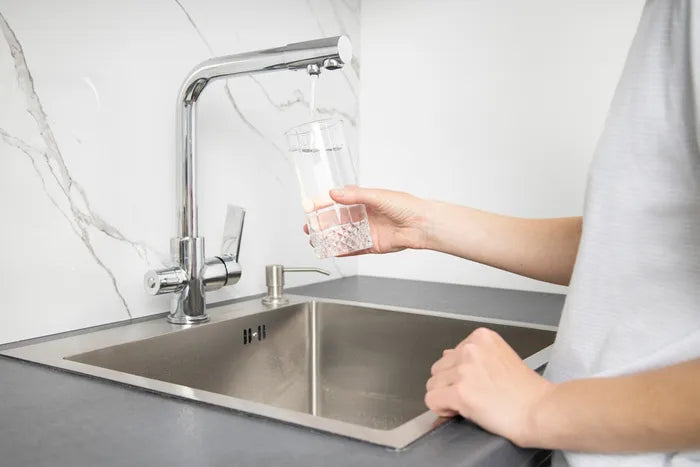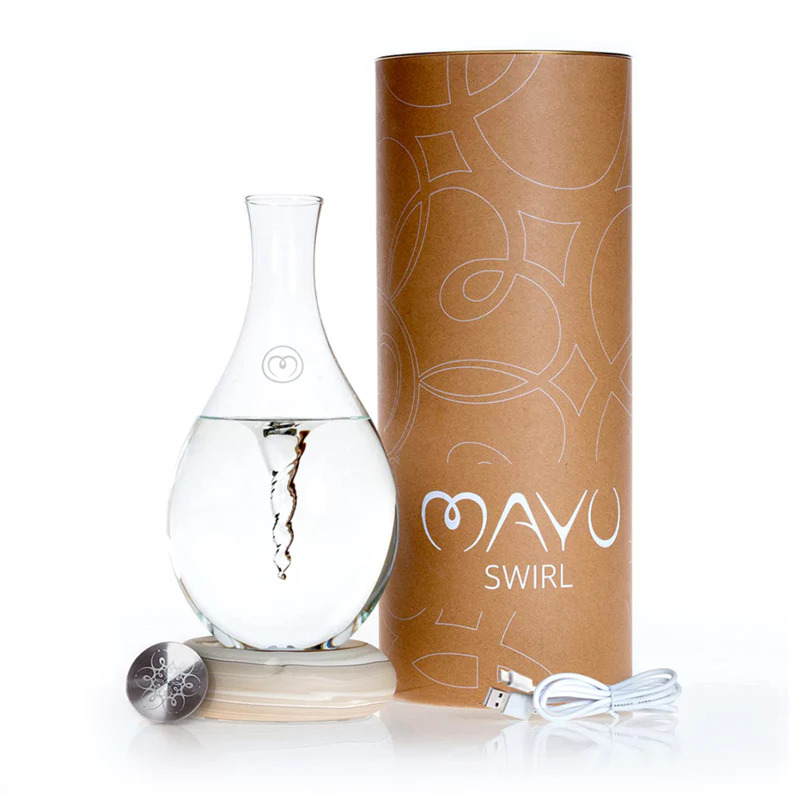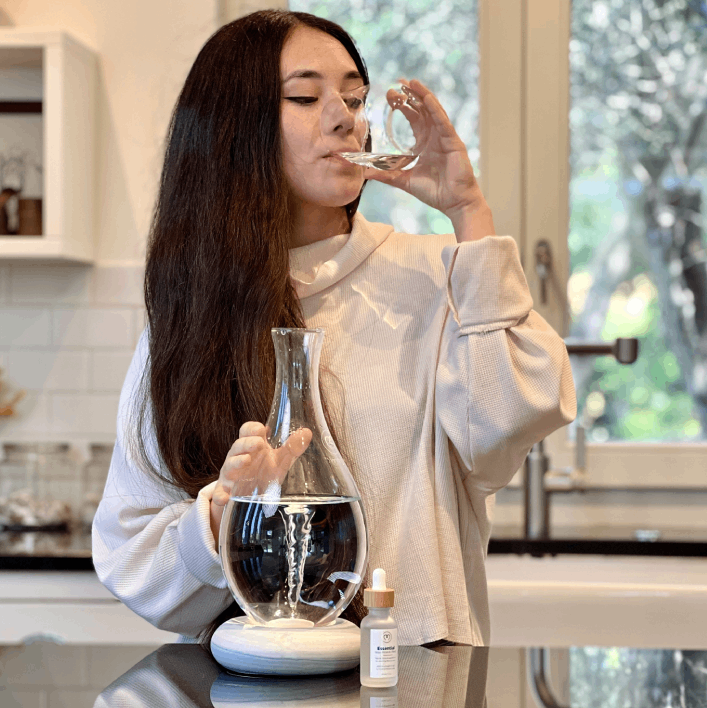H3O2 vs. H2O: What's the Real Difference?
Discover the science behind structured water (H3O2), how it differs from regular H2O, and why its unique molecular arrangement might revolutionize your hydration experience.
Published April 24, 2025

When you pour yourself a glass of water, you might think you're just drinking H2O—two hydrogen atoms bonded to one oxygen atom. But what if there's more to water than meets the eye?
Structured water, sometimes called H3O2, could offer unique benefits beyond hydration. Let's look into the differences between H2O and H3O2.
» Turn your H20 into an H30 using the MAYU Water Swirl
Understanding the Molecular Difference
Regular H2O consists of two small hydrogen atoms attached to one large oxygen atom, arranged in a somewhat random pattern. This is the water we're all familiar with in its three common states: solid, liquid, and gas.
H3O2 structured water has a more organized molecular arrangement. Also known as exclusion zone (EZ) water, it's considered by some researchers to be the "fourth phase" of water—a theory developed by Dr. Gerald Pollack, Professor of Bioengineering at the University of Washington.
In this form, water molecules align in specific patterns instead of moving randomly. According to Korean scientist Dr. Mu Shik Jhon, your cells better absorb this structured water—which may play a role in preventing chronic illnesses [1].
» Discover all there is to know about structured water
How H3O2 Affects Hydration and Health
The Relationship Between Water and Your Body
What many people don't realize is that water in our bodies isn't just a random arrangement of molecules. It naturally includes a mixture of structures, including tetrahedron or cage-like arrangements and ring-like formations.
Most importantly, water and proteins are connected in our bodies. Without properly structured water, proteins can't function optimally, which shows just how essential quality hydration is for our health.
» Learn more about out how food and water choices affect your body
Enhanced Cellular Absorption
According to Dr. Jhon's research, healthy DNA is surrounded by structured water [1]. This tightly held water forms a protective layer against external factors that might distort DNA.
Due to its smaller cluster size, structured water can penetrate the body's cells more efficiently, potentially delivering hydration, nutrients, and oxygen more effectively.
One case study found that when a subject drank structured water for three years, their resting heart rate, energy expenditure, and oxygen consumption decreased significantly [2].
» Check out the best water types that can hydrate your cells
Measurable Physical Differences
The differences between H3O2 and conventional H2O aren't just theoretical but measurable. Research by Dr. Pollack and others has documented that [3]:
- Structured water has approximately ten times higher viscosity than regular water
- The density of structured water is about 17% higher
- While normal water has no charge, EZ water has an electrical potential of around -200 mV
These physical properties may contribute to how structured water interacts with our biology.
» Learn about the health benefits of drinking structured water
Practical Applications: Beyond Just Drinking
Structured water's benefits go well beyond personal hydration into several practical areas such as:
- Agriculture: Studies have shown that animals drinking structured water had significantly greater body weight gain (84%) compared to those drinking tap water (23%) [4].
- Plant Growth: Plants grown with structured water demonstrated better nutrition, higher yields, and improved growth [5].
- Taste: Many people say that structured water has a smoother, more pleasant taste compared to regular water
» Get answers to the 10 burning questions about structured water
Creating Structured Water at Home
Several methods can transform conventional H2O into more structured water:
- Natural methods include exposure to sunlight, heat, electromagnetic fields, crystals, and infrared rays
- According to Dr. Pollack, natural compounds like turmeric may help generate structured water
- Vortexing devices that mimic the natural swirling flow of water in streams and waterfalls are particularly effective
» Read our in-depth guide on how to make structured water
Modern Approaches to Water Enhancement
Traditional water structuring devices often use electrolysis, which can present risks such as electrode material corrosion and high maintenance costs.
Specialized water enhancement systems, such as MAYU's vortexing technology, offer a more natural approach.
By creating gentle swirls, these systems restructure water molecules, enabling our cells to absorb water more efficiently. The aeration process also naturally increases oxygen and pH levels while removing CO2 and volatile organic compounds.
With the MAYU Swirl Carafe, you can create structured water in just 7 minutes using natural, safe materials—bringing the benefits of naturally flowing water right to your kitchen.
The Exciting Future of Structured Water
Research interest in structured water continues to grow, with several promising developments:
- Dr. Pollack's lab is studying structured water's potential for water desalination [6].
- The positive and negative charges in the exclusion zone could potentially be harnessed as a natural battery [7].
» Learn how to make structured water
Experience the Difference for Yourself
While research into structured water continues to evolve, many people are already experiencing the benefits of enhanced water through simple methods like vortexing.
With the MAYU Swirl, you can easily transform your ordinary tap water into revitalized, structured water that may offer improved taste and hydration benefits.
Ready to take your hydration to the next level? Try the MAYU Swirl and experience the difference that properly structured water can make in your daily wellness routine.
References:
- C. L. Ramsey, “Biologically Structured Water (BSW) - A review (Part 1): Structured Water (SW) Properties, BSW and Redox Biology, BSW and Bioenergetics,” Journal of Basic & Applied Sciences, vol. 19, pp. 174–201, Dec. 2023, doi: 10.29169/1927-5129.2023.19.15. Available: https://setpublisher.com/index.php/jbas/article/view/2490
- C. Ramsey, “Case Study: Long-Term Monitoring of Health Biomarkers after Drinking Structured Water Over 43 Months,” Journal of Basic & Applied Sciences, vol. 20, pp. 151–181, Dec. 2024, doi: 10.29169/1927-5129.2024.20.16. Available: https://setpublisher.com/index.php/jbas/article/view/2549
- “Water Ordering Induced by Interfaces: An Experimental and Theoretical Study – summary.” Available: https://waterjournal.org/archives/yinnon-4-summary/
- M. I. Lindinger, “Structured water: effects on animals,” Journal of Animal Science, vol. 99, no. 5, Feb. 2021, doi: 10.1093/jas/skab063. Available: https://pubmed.ncbi.nlm.nih.gov/33640985/
- K. Korotkov, “Study of structured water and its biological effects,” International Journal of Complementary & Alternative Medicine, vol. 12, no. 5, pp. 168–172, Jan. 2019, doi: 10.15406/ijcam.2019.12.00468. Available: https://medcraveonline.com/IJCAM/study-of-structured-water-and-its-biological-effects.html#:~:text=Results:%20Statistically%20significant%20difference%20between,of%20the%20EPI/GDV%20method.
- “research | pollacklab,” Pollacklab. Available: https://www.pollacklab.org/research#:~:text=2-,Desalination,-It%20appears%20that
- “research | pollacklab,” Pollacklab. Available: https://www.pollacklab.org/research#:~:text=Photons%20from%20ordinary,water%20and%20interfaces.
Disclaimer: The information published by Mayu Water is not a substitute for the expert knowledge, advice, and recommendations of trained professionals. We strongly recommend consulting with industry experts and primary or scientific sources before making any health, research-related, or other important decisions.












